15 Best Jira Alternatives & Competitors for Agile Teams in 2025

Sorry, there were no results found for “”
Sorry, there were no results found for “”
Sorry, there were no results found for “”

Jira started to feel heavy for my team’s changing needs, so I explored a mix of alternatives—some better for agile, others great for task tracking. In the end, ClickUp offered a cleaner, more adaptable workspace. This blog covers what I learned comparing these tools from a project manager’s lens.
Atlassian’s Jira is a project management software and bug-tracking tool Agile teams use for collaboration and task management.
While Jira is a popular project management tool, it often requires extensive setup or customization. In 2021, it introduced a Work Management feature to address some gaps, yet it still struggles to facilitate cross-team collaboration between technical groups and other stakeholders.
For example, Jira’s search and filtering systems could be more intuitive. Plus, its subscription costs keep increasing without any tangible value addition.
Jira was built with only software development teams in mind.
I’ve used Jira and faced these shortcomings myself. This led me, along with the team here at ClickUp, to look for Jira alternatives. After considerable research, we’ve put together a list of the 15 best Jira alternatives, including paid and free project management software.
I’ll walk you through each tool and its key features, talking through different project management use cases to help you decide the best option.
Let’s get started.
Read more: Jira integrations to supercharge your productivity
| Tool | Best for | Used by | Starting price |
| ClickUp | Advanced AI-enabled project management | Teams across the organization | From $0 to $19 per month; custom pricing for enterprise plans |
| Asana | No-frills project management | Marketing IT Operations Leadership | From $0 to $30.49 per month; custom pricing for enterprise plans |
| Monday.com | Workflow automation with a strong focus on usability | Marketing Product Sales IT Operations PMO HR | From $0 to $24 per month; custom pricing for enterprise plans |
| Smartsheet | Project management in an Excel-like interface | Project management IT Operations Strategic planning Marketing | From $0 to $32 per month; custom pricing for enterprise plans |
| Taskade | Real-time workspace for tasks and video collaboration | Project management Marketing | From $0 to $16 per month |
| Zendesk | Customer service integrated into project management | Customer support | From $69 to $149 per month; custom pricing for enterprise plans |
| Wrike | Complex project management needs | Marketing Professional service PMO Creative and design | From $0 to $24.80 per month; custom pricing for enterprise plans |
| Notion | Content-centric workflow management | Design Engineering Product Managers | From $0 to $18 per month; custom pricing for enterprise plans |
| ProofHub | All-in-one project planning needs | Product development Marketing Creative and design Sales | From $50 to $99 per month |
| Assembla | Integrating source code with project management | Project management Software teams | $21 per month; custom pricing for enterprise plans |
| Pivotal Tracker | Iterative project progress tracking for development teams | Agile software teams Project management | Free; custom pricing for enterprise plans |
| Bugzilla | Managing software build with bug-tracking capabilities | Software teams | Free |
| Hygger | Prioritizing and managing Agile projects | Scrum teams Kanban teams | From $0 to $18 per month |
| Backlog by Nulab | Project management combined with issue tracking and version control | Quality assurance UX and design Development Product management IT Sales Marketing | From $0 to $175 per month |
| Bitrix24 | Project management with communication and social collaboration features | Project management Marketing HR Customer service | From $61 to $499 per month |
📮ClickUp Insight: 37% of workers send follow-up notes or meeting minutes to track action items, but 36% still rely on other, fragmented methods.
Without a unified system for capturing decisions, key insights you need may get buried in chats, emails, docs or spreadsheets. With ClickUp, you can instantly turn conversations into actionable tasks across all your tasks, chats, and docs—ensuring nothing falls through the cracks.
Our editorial team follows a transparent, research-backed, and vendor-neutral process, so you can trust that our recommendations are based on real product value.
Here’s a detailed rundown of how we review software at ClickUp.
ClickUp’s Project Management Software tops the list as it caters to the entire spectrum of organizational needs, building cohesive workflows adaptable to various business scenarios. Yes, your PMO and engineering teams will love it, but so will teams in functions like marketing, finance, and talent management.
This makes it not just an alternative to Jira but a potentially superior choice for integrating a wide range of functions under one roof.
ClickUp stands out as the first to seamlessly combine a comprehensive productivity and work platform with a communication and collaboration tool — ClickUp Chat.
ClickUp Chat brings conversations, tasks, and projects to one platform. With every important discussion stored in one place, I can focus on meaningful work without the fear of losing critical information. Plus, the AI-powered Chat makes it effortless to turn a message into a task with just one click.
I use ClickUp Whiteboards to sketch out ideas or concepts and then turn them into tasks easily. It’s a smooth transition from planning to action. In Jira, you would need to involve other tools to enable similar features, which can slow things down.
The ClickUp Gantt Chart View helps visualize project timelines and dependencies more intuitively. Unlike Jira, which might require extra plugins or setup for Gantt charts, ClickUp includes these features right out of the box, fully customizable to meet different project needs. Given how we use Gantt charts all the time, I’d prefer Jira alternatives that make them easy.
In addition, I find that tracking key performance indicators (KPIs) is simple with ClickUp. With ClickUp Goals, I can set team and individual objectives with measurable targets and automatic progress tracking. This ensures all team members see how their efforts contribute to the bigger picture.
ClickUp suits Agile teams very well with its customizable Agile dashboards that give real-time insights into sprints and make tracking progress against goals much easier.
We also frequently use Sprint reporting with ClickUp. The platform helps me summarize our sprint activities effectively, highlighting both our achievements and areas for improvement. This feedback helps us refine our approach for future sprint planning, fostering continuous improvement.
The native GitHub integration in ClickUp stands out for our development teams. It links our task management directly with our code repositories, allowing us to track commits, pull requests, and branches right from ClickUp. It significantly reduces the need to switch between tools.
ClickUp’s no-code automation has been a major relief by cutting down on repetitive tasks. Setting up automations for routine processes like task assignments and status updates means that I can focus more on high-value activities.
My favorite aspect about ClickUp, though, is ClickUp Brain, the versatile AI assistant. It’s become an essential part of my project management toolkit as it integrates my entire digital workspace, enhancing how I manage everything from documents to communication.
Our entire team uses ClickUp Brain’s AI writing assistant to create product briefs, brainstorm ideas for upcoming meetings, take and summarize notes, and create detailed progress and bug-tracking reports.
ClickUp Brain allows me to generate drafts quickly, which I can then personalize. The AI can craft and edit text based on my prompts or from a selection of over 100 role-based prompts. Additionally, it helps me swiftly reply to messages and even transcribe audio files, improving my productivity by almost 10X.
ClickUp also has 1000+ pre-built templates for agile teams. We often use ClickUp’s Bug and Issue Tracking Template, which has advanced features for complex software development needs involving cross-functional teams.
Rather than depending on spreadsheets or multiple threads across Slack or emails, this centralized template gives you a bird’s eye view of bugs, issues, and defects and their current status.
For our team, ClickUp covers all the bases of project management, from strategy and planning to reporting. It allows teams from different departments to collaborate, build, and ship products faster. That’s why ClickUp is the ultimate everything app for work.
Bonus: The ultimate software development template guide to manage all aspects of agile development in ClickUp.
I like the fact that as a manager it gives me an overview of all the projects that my team is working on, what’s even better is that I can trickle down specifically what are the details of the project, who is the owner, what is the current status/update, and when is the due date. Teams can easily collaborate with each other as on the comments section members can tag each other.
Creating project boards is one of ClickUps strength as well as a user can freely choose how the board would look like through templates and customizations.
Integrations to Google Workspace works like a breeze as I get notifications for every update on each project.
Also read: Our detailed comparison of ClickUp vs. Jira
1. Automate Backlogs & Tailor Agile Workflows: ClickUp makes it easy for me to automate my backlog and set up workflows that actually fit how my team works—whether we follow Scrum, Kanban, or our own version of agile. Visual roadmaps help me align tasks with larger goals.
Bonus: Built-in time tracking means I don’t need extra tools like I would with Jira. On the Business plan, I even get detailed timesheets and advanced tracking.
2. Keep Tasks and Communication in One Place: With ClickUp Chat, I don’t need to bounce between Slack, email, and my task board. My team and I can chat, tag each other, assign tasks, and resolve blockers—all without leaving the platform.
3. Collaborate in Real Time with Whiteboards: When we’re in the early planning or design phase, ClickUp Whiteboards are my go-to. They help us map out user journeys, brainstorm, and instantly turn ideas into tasks. Perfect for working with both remote and in-office teammates.
4. Set and Track Goals with Precision: For product launches or release cycles, ClickUp Goals let me set clear targets, monitor project progress, and stay accountable. Everything’s trackable in one dashboard, so I always know where we stand—and so do my stakeholders.
5. Visualize Progress with Gantt Charts & Kanban Boards: Need the big picture? ClickUp’s Gantt Chart View gives me visibility into timelines, dependencies, and due dates—plus, it’s included in the free plan (unlike Jira). For day-to-day work, I switch to Kanban Boards for quick, visual updates.
6. Start Fast with Pre-Built Templates: ClickUp’s templates help me get started fast—whether it’s sprint planning, bug tracking, or backlog grooming. They’re fully customizable, so I can make them fit my team’s process without starting from scratch.
Here’s why Gatekeeper chooses ClickUp over Jira for project management:

When exploring Jira alternatives, Asana is one of the tools I’ve tried. It’s often seen as a task manager with a simpler interface and less technical overhead compared to Jira, which leans more toward DevOps use cases.
In my experience, Asana is easy to get started with—I could create tasks, assign owners and due dates, label them, and organize them into folders. Automation and app integrations were also fairly straightforward to set up directly from the board.
Asana uses a Work Graph® to map tasks, deadlines, and dependencies across projects. This can be useful in cross-functional setups, especially when tracking how individual pieces contribute to broader goals.
That said, I did run into limitations. While the Timeline View helps visualize dependencies, it doesn’t show subtasks—which makes it harder to manage detailed project plans. ClickUp, in contrast, gives the option to display subtasks on the timeline, offering better visibility for granular planning.
Overall, Asana covers the basics well, but if your project requires deeper task hierarchies or advanced visibility, it may feel restrictive. And while Jira can be overly complex, Asana may be too light for teams needing structured, scalable workflows.
Read more: A day in the life of a software developer
ClickUp integrates with Asana through Zapier. When a task is newly tagged in Asana, a corresponding task is created in ClickUp.
This helps maintain synchronized workflows across diverse platforms without manual updates, minimizing the risk of oversight and poor communication between departments or stakeholders who may prefer specific tools. It’ll also make migration from Asana super smooth.
Here’s what a Redditor has to say about Asana:
Asana is great for marketing and business initiatives where software development tools integration is not important. If you use Slack to communicate, as most engineering teams do, you can integrate with both Jira and Asana.

I tried Monday.com while managing cross-functional projects, and while it’s marketed as a flexible Work OS, I found it lacking in depth for anything beyond basic task tracking.
It comes with boards, automations, and views—enough to get started—but most features felt surface-level. For example, while it supports Scrum and Kanban, the lack of true hierarchy or detailed reporting made it hard to scale across multiple, complex projects.
The built-in file management was meant to simplify collaboration, but in practice, it just added another layer—files were stored, but not meaningfully integrated into the workflows.
I also used WorkDocs, which lets you co-edit documents within Monday.com. It’s a nice idea, but limited. The undo function only reverses individual input, not collaborative changes, which feels more like a patch than a true version control feature.
Compared to Jira, Monday.com is easier to pick up, but that comes at the cost of flexibility. Customizations felt constrained, and many routine actions (like updating visibility across views) still required manual work.
What stood out most was the lack of AI or advanced automation. For a platform that positions itself as a modern project solution, that gap makes it harder to recommend—especially when other tools are already offering smarter, more proactive support.
In short: If you’re running small, low-complexity projects, Monday.com might suffice. But for anything requiring layered workflows, technical depth, or serious reporting, it quickly hits its limits.
ClickUp integrates with Monday.com through Zapier. Besides creating a new task to be automatically mirrored in ClickUp and vice versa, you can generate comprehensive reports by pulling data from both tools to get a unified view of project status and team performance. It automates repetitive tasks such as reporting updated project progress.
Monday has been a great tool to help us stay on top of all our tasks and finances. It has given us the ability to create custom workflows that are tailored to our specific needs, which has in turn allowed us to be more efficient in managing our daily operations.
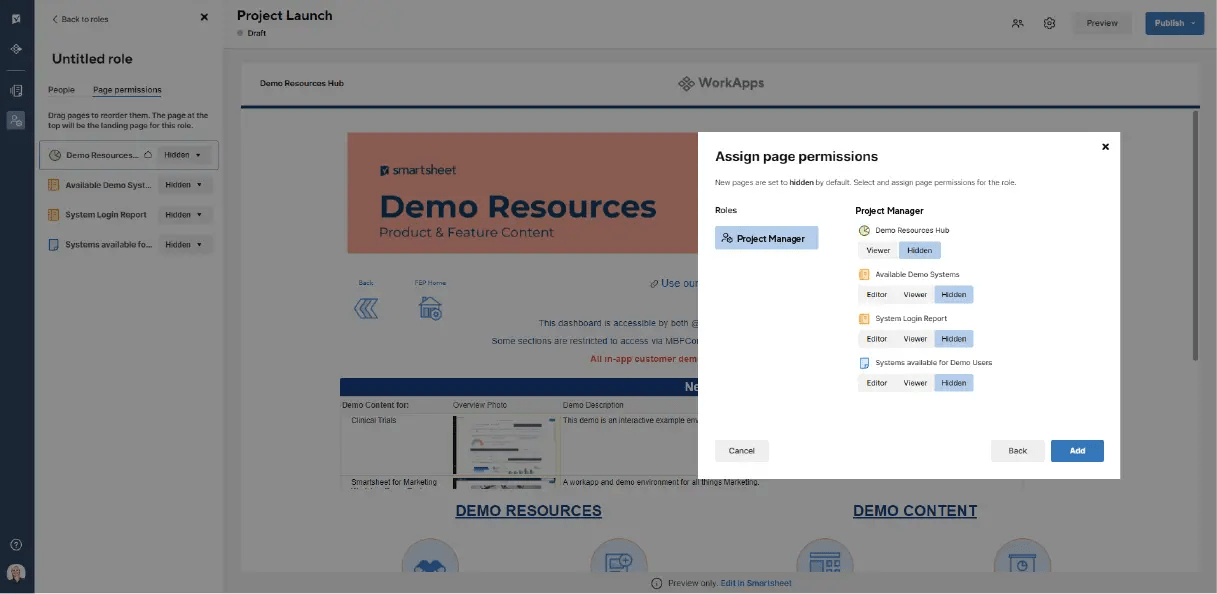
I’ve worked with Smartsheet as an enterprise work management tool that combines spreadsheets with visual timelines and portfolio management. Unlike many Jira alternatives, it handles complex calculations like project costs and links data across multiple sheets.
Smartsheet includes native digital asset management and analytics, features that Jira lacks. It also offers WorkApps, letting you build no-code apps from templates or existing data sources like Google Docs or Tableau.
I set up distinct roles—project managers could edit full plans and view dashboards, while assignees had limited access focused on their tasks. This role-based control is useful for managing data visibility across teams.
For sectors like healthcare or government, where transparency and data control matter, Smartsheet can be a practical option. However, for teams needing a lighter, more agile tool, it may feel overly complex.
Read more: Software engineering trends
We really enjoy using Smartsheet because it makes things simple for us. We like that we have a central place for tasks/projects, can easily assign them across our team, and can go back and see how those tasks/projects went. It’s better than working out of multiple spreadsheets and can tie together different aspect of our business.
Also read: 20 Smartsheet alternatives you can consider today
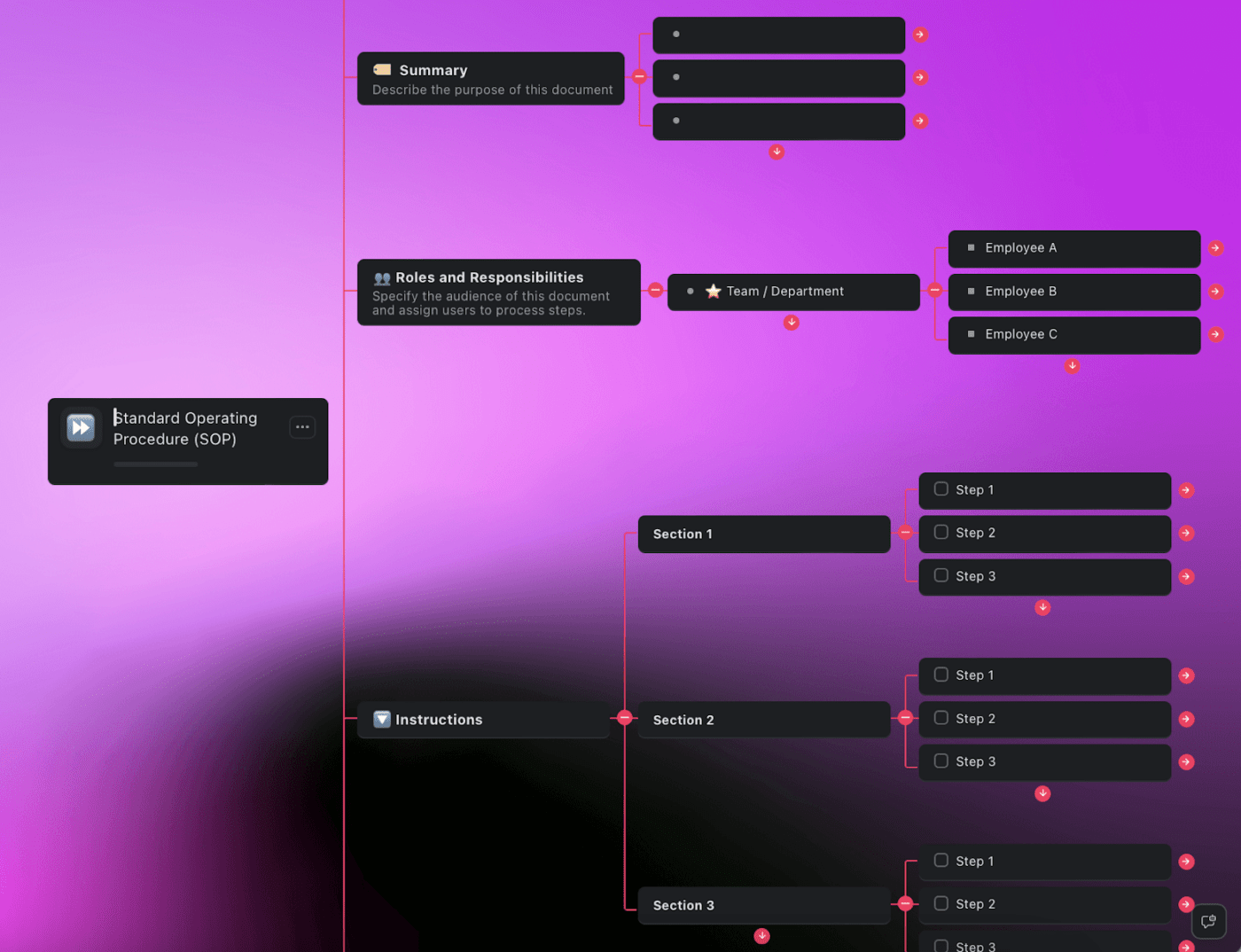
I explored Taskade, an AI-powered remote workspace designed to boost productivity and collaboration. Its customizable AI agents can automate tasks like scheduling, user persona research, drafting emails, and brainstorming content, which sounds promising but felt somewhat limited in practice.
While Jira is built for detailed software development tasks like in-depth project tracking and bug resolution, Taskade aims to cover a broader range of productivity needs. At ClickUp, we used it to manage workflows—from daily stand-ups to product sprints—but found that its features can lack the depth and structure required for complex projects.
Taskade’s flexible templates offer more adaptability than Jira’s rigid setup, and its ‘Instant Demo’ feature helps new users quickly set up sample projects. However, this walkthrough doesn’t fully prepare teams for real-world complexities or scaling.
Sales teams might find value in using Taskade to onboard new hires and manage contact workflows, but the platform’s broad focus means it’s not specialized enough for deeper project management needs.
Unlike other Jira alternatives focused strictly on project management, Taskade is more of a general productivity platform combining tasks, communication, and notes. While this all-in-one approach simplifies some workflows, it may fall short for project managers who need advanced tracking and detailed reporting.
If you’re wondering which platform to use between Taskade vs. ClickUp, this Reddit review gives a clear distinction between the two:
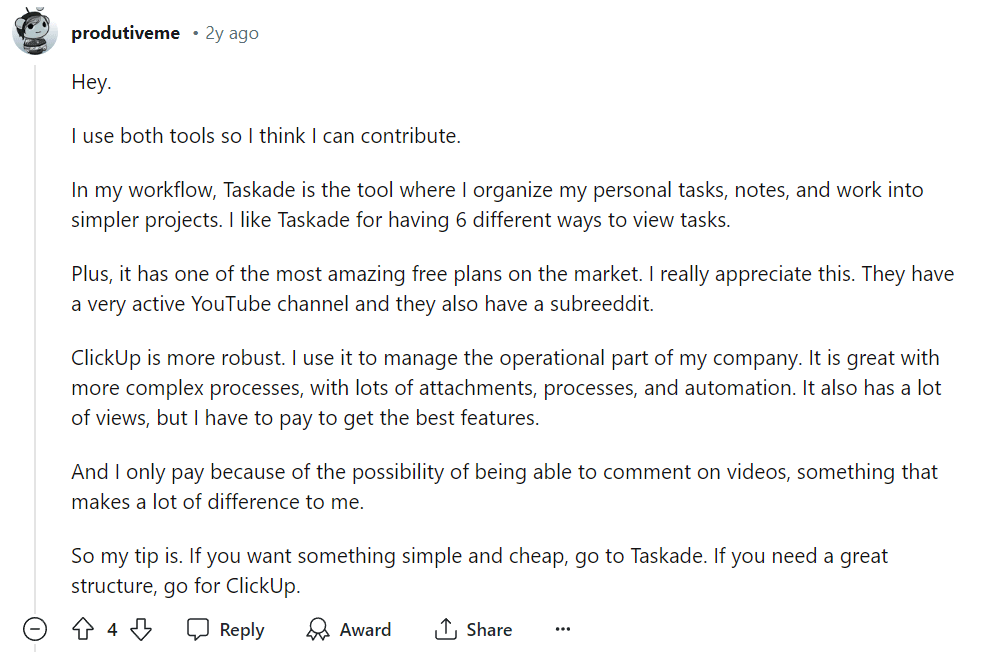
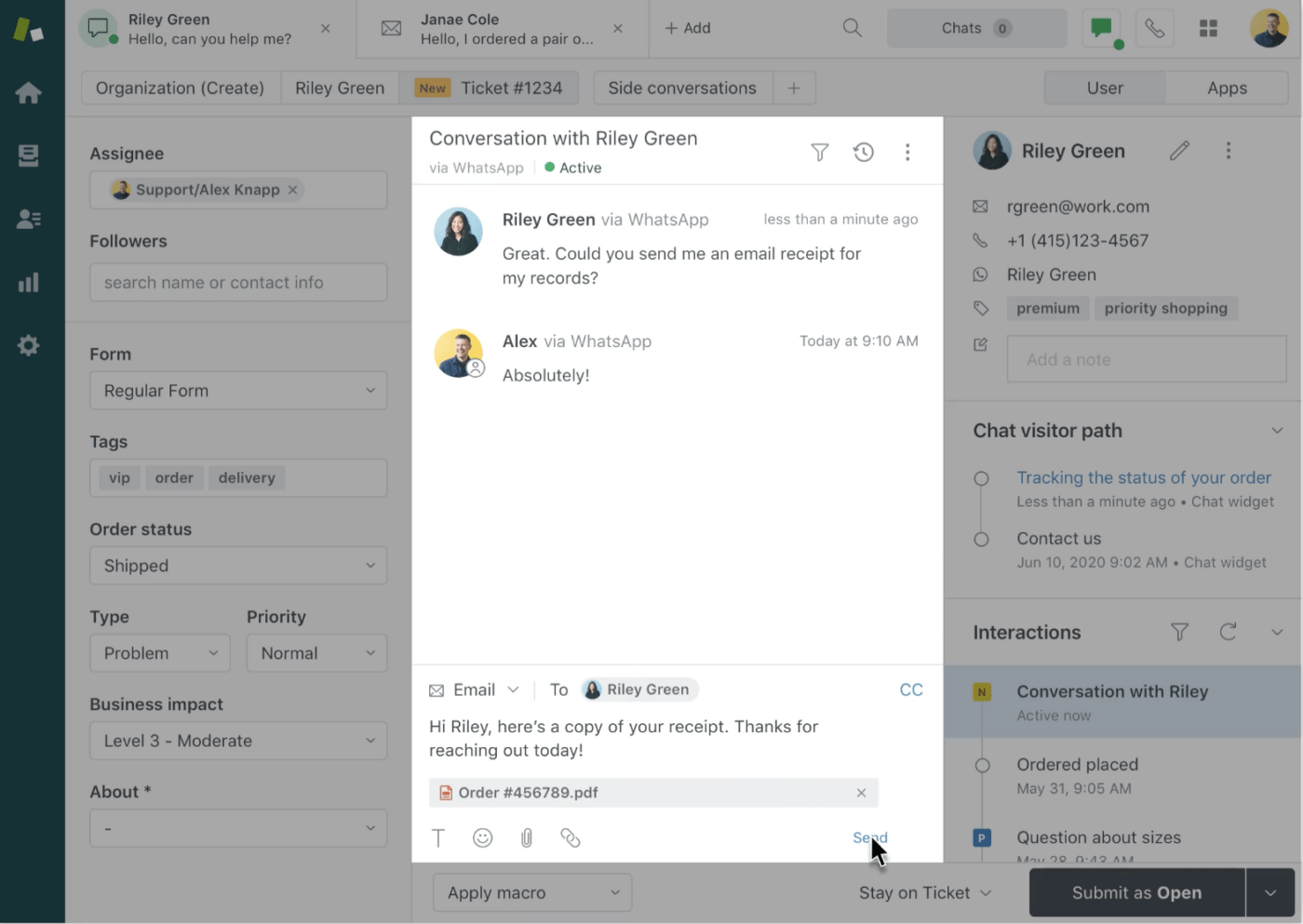
Zendesk is primarily known as customer service software, not a traditional project management tool. Unlike Jira, which focuses on project and issue tracking, Zendesk’s ticketing system consolidates customer queries from email, chat, social media, and calls into one platform.
When managing multiple development teams, I used Zendesk’s agent workspace to handle client interactions efficiently. Incoming queries appeared in a unified view, allowing me to review messages quickly and link them to relevant project tickets for traceability—a workflow Jira doesn’t support well.
That said, Zendesk feels more suited for customer experience than complex project management. Its best features are locked behind pricey paid plans, making it less appealing for smaller teams or projects focused on development.
Would I pick Zendesk over other Jira alternatives? It depends. For large organizations prioritizing CX, it might work. For most project managers looking for agile, affordable solutions, it falls short.
ClickUp integrates with Zendesk and helps you manage your inbox by quickly creating, linking, and switching between tasks in ClickUp and tickets in Zendesk. You can add ticket information to your ClickUp tasks, assign owners, and set due dates from Zendesk.
Creating or linking a ticket to a task automatically adds a link back to your ClickUp task. Moreover, you can attach any number of ClickUp tasks to a ticket in Zendesk for easy reference to task status and ID.
Zendesk has been instrumental in bringing support for our organization into the modern era. Compared to our previous solution, Zendesk provides the visibility, ease of use, and appropriate metric monitoring for our needs. We have been able to increase our technical support knowledge through the use of searching, tags, and knowledge base integration as well as provide our customers with a platform to find answers to their own issues.
Also read: The most useful Zendesk integrations you can pick

Wrike offers a robust set of project management features, including a detailed task system and reporting capabilities that are more comprehensive than what Jira typically provides. Because of this, it’s definitely one of the Jira alternatives I’ve considered seriously.
One advantage over Jira is Wrike’s built-in time tracking, which eliminates the need for third-party tools like Everhour or Harvest. This can simplify time management across projects.
A standout feature is Wrike’s AI, called Wrike Work Intelligence. When I started a new project, the AI suggested tasks based on historical data and project details. While these suggestions helped speed up the planning phase, they weren’t always accurate or complete, so I had to carefully review and adjust them to avoid missing critical tasks.
The AI can save time, but it’s not a replacement for thorough planning and hands-on management. Wrike’s features are useful but require attention to detail to get the most out of them.
ClickUp integrates with Wrike, allowing you to transition to ClickUp smoothly and hassle-free.
Wrike is a very flexible, fully-featured, project and task management system. It has all the features I’m looking for like planning, dependencies, assignments, due dates, projects, folders. At first the folders/projects tagging system was a bit of a tough mental model to learn, but once I did I saw how powerful it was and really use it heavily.
Not keen on Wrike? Here are 15 Wrike alternatives to try

Next on my list of Jira alternatives is Notion, a productivity and note-taking application. It offers tools for planning, organizing, and collaborating on work and personal projects within a single platform. You can build your custom dashboard and add task lists, timelines, progress trackers, and team member assignments.
Notion excels as a collaborative documentation tool for service management. It enables teams to create and share project-related documents such as meeting minutes, FAQs, and best practices in a joint project wiki.
I found that the biggest difference between Notion and Jira was that:
| Notion: All-purpose tool catering to a broader audience, including businesses of all sizes, students, and individuals looking for an integrated space to manage their work | Jira: Better for technical teams involved in core software project cycles that demand sprint planning tools, complex workflows represented via Scrum and Kanban boards, and integrations with other development tools, such as Bitbucket and Confluence |
What particularly impressed me on the platform was Notion AI. When I began a new document, I immediately tapped into its AI-powered templates, which covered a range of needs—from drafting SOPs to doing SWOT analysis.
I could select the template that best suited my needs and start fleshing out details within a few minutes, saving me time and effort instead of creating them from scratch.
This feature is especially beneficial when facing Notion’s overwhelming versatility. If you feel swamped, simply starting with a template can ease the burden. The assistant guides you through the process interactively, making it less daunting.
If you’re a part of the creator economy or a small design agency that juggles multiple clients, Notion’s project management functionality is ideal for you. You can create separate pages for each project or client to store objectives, brand guidelines, and timelines.
Notion at first didn’t make sense to me, but when it clicked, boy did it click. I run my business from Notion, I track my habits, I track my reading notes and daily notes—it all lives inside Notion. And with AI tools getting better, I only see my use of Notion growing.
Add Notion AI add-on to your workspace for $8 per month per user.
Also read: We compared Notion AI vs. ClickUp AI to help you choose
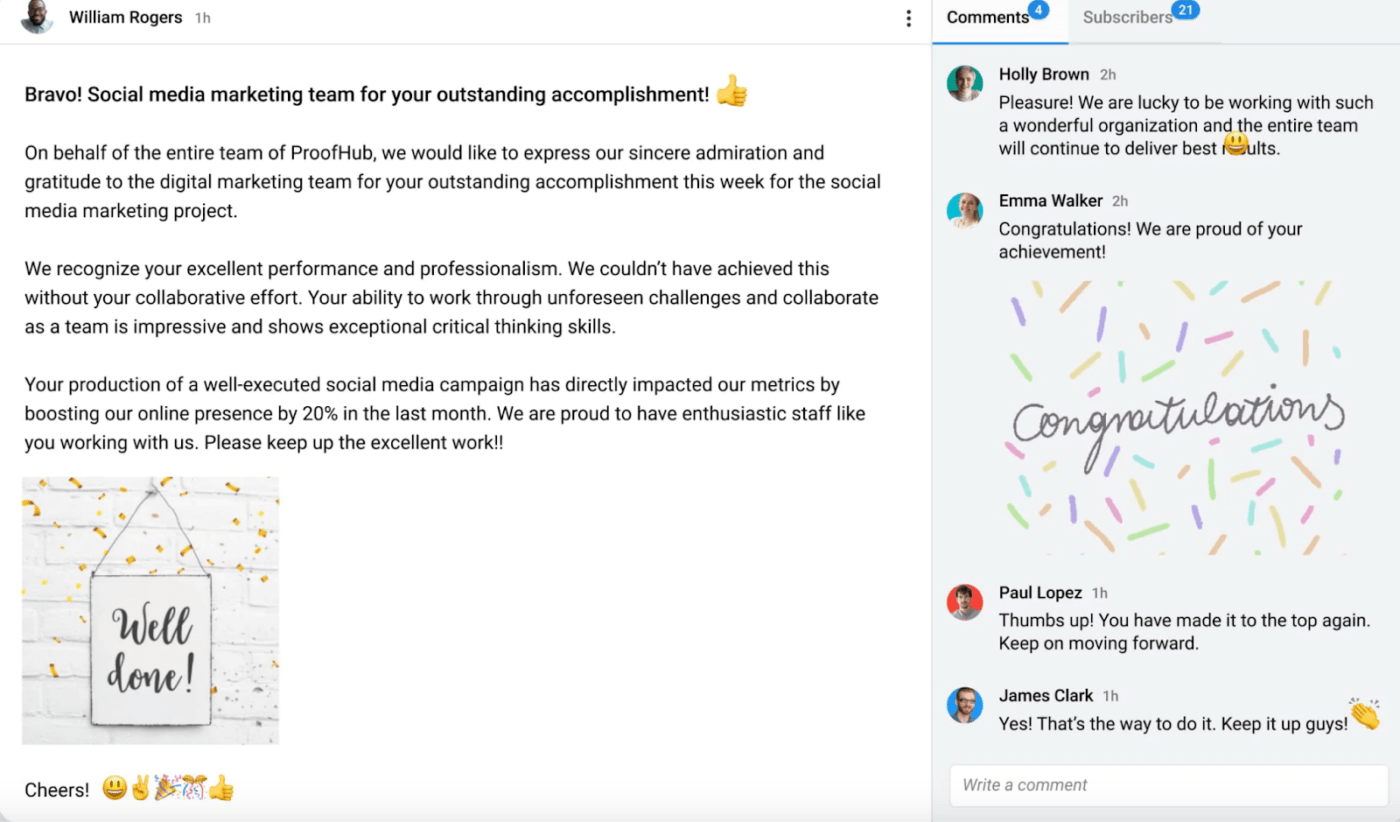
ProofHub offers features that simplify task management, collaboration, and project tracking, giving a consolidated view of tasks, goals, and progress. It stands out among Jira alternatives with built-in tools like task lists, timesheets, and in-app chat.
Unlike Jira, where task lists are tied to issues and timesheets require add-ons like Tempo, ProofHub provides these features natively. Jira’s communication is limited to comments on tickets, making discussions cumbersome, whereas ProofHub’s in-app chat and ‘Announcements’ feature help keep stakeholders informed and engaged.
I used announcements to create targeted channels like ‘Development Updates’ and schedule automated reminders for meetings or deadlines. The ability for team members to comment fosters better two-way communication.
However, ProofHub isn’t perfect—some features feel basic compared to specialized tools, and the interface can get cluttered with frequent announcements.
Overall, for teams needing close collaboration on projects like marketing or events, ProofHub is a viable Jira alternative but with some usability trade-offs.
Here’s what a G2 review has to say about ProofHub:
ProofHub resolved the most critical issue for us – securing the information. It allowed us to bring all our clients on the board but with controlled accessibility. With the help of custom roles, we could manage each user’s access levels. This way, we could give clients the right levels of visibility and restrict access to the information that is irrelevant to their projects and eyes.
Both packages involve flat pricing and no per-user fee.
Also read: 10 great alternatives to ProofHub
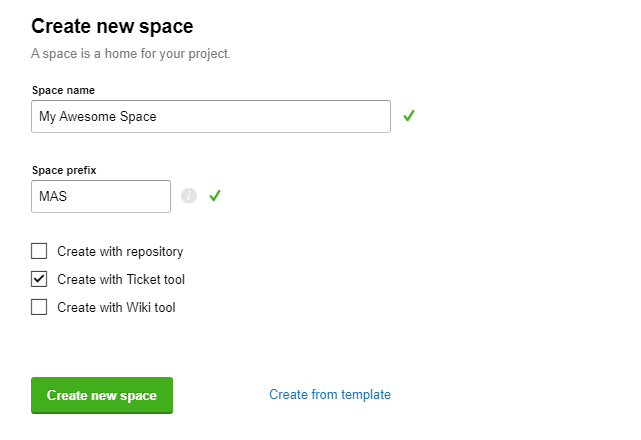
Next on the list is Assembla, a cloud-based platform combining project management with source code management (SCM) for software teams.
It offers task tracking, issue management, and a centralized ticketing system with visual project boards that update automatically. It felt well-suited for dev teams focused on efficient code collaboration and version control.
Unlike Jira, which requires plugins to integrate Git, SVN, or Perforce, Assembla includes native support for all three, saving time and extra costs.
Projects are organized into spaces—dedicated work areas with separate tools and members—which helped my team manage multiple projects without confusion.
Task, bug, and issue tracking is straightforward, with custom workflows to assign, prioritize, and monitor progress.
It also offers multiple views like Gantt, Scrum, Waterfall, and Kanban boards, allowing flexibility in managing tickets.
However, Assembla’s interface can feel dated and less intuitive compared to newer tools, and some features lack depth.
Overall, it works if code management is your priority, but it may not be the best fit if you want a modern, all-in-one project management experience.
Assembla allows our team to organize and execute with full visibility of what everyone is doing. Collaboration is certainly its core feature. We’ve tried other solutions, but its features stand out.
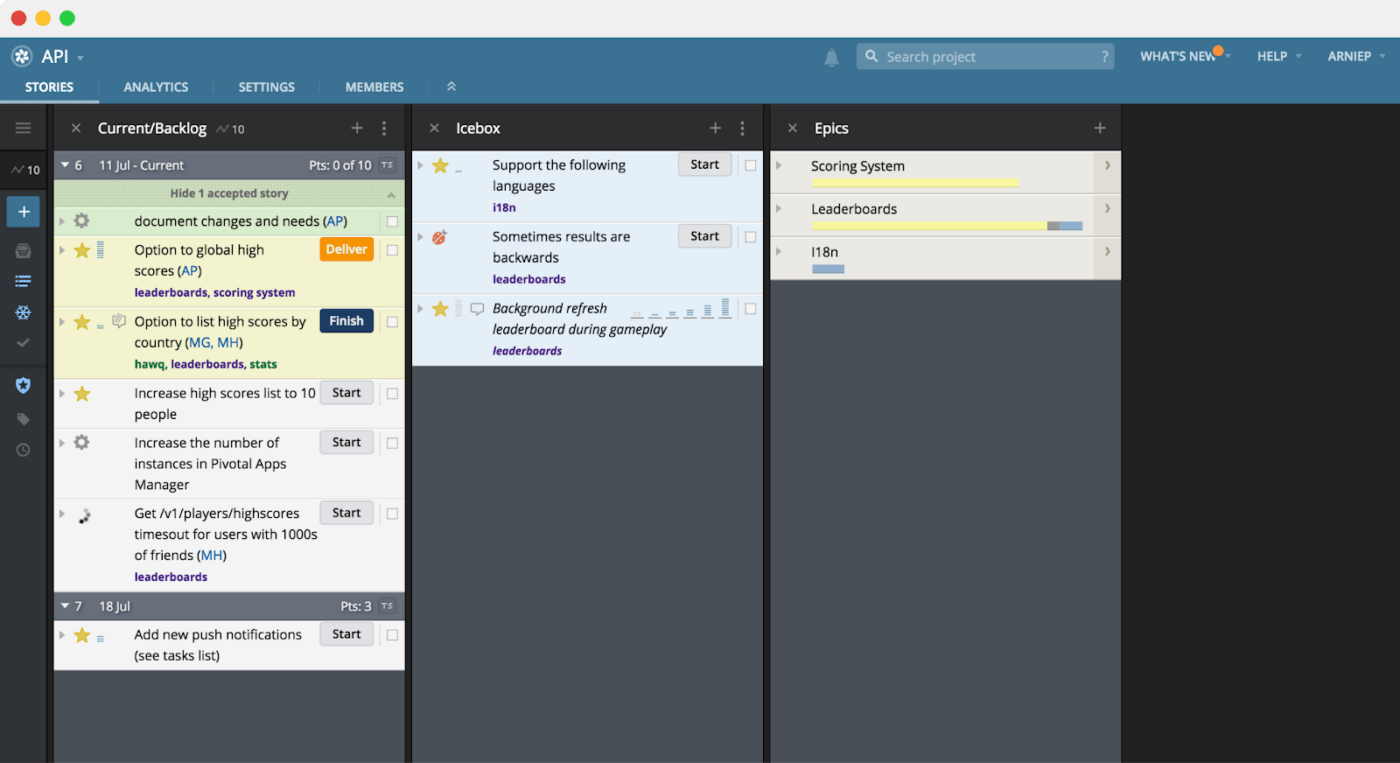
Pivotal Tracker is an agile project management tool worth considering among Jira alternatives for software teams.
It offers backlog lists, hotfix tracking, automatic velocity calculation, and project completion predictions—features Jira doesn’t handle natively. The interface centers on ‘stories’ moving through development stages.
I found its guided tracker breaks work into manageable chunks for iteration planning, which suits teams strictly following Agile.
Setting up projects involved creating detailed user stories with acceptance criteria. The drag-and-drop interface made reprioritizing easy, and stories could be auto-grouped into iterations based on velocity and estimates.
However, the tool feels rigid and focused heavily on Agile purists, which might frustrate teams needing more flexibility or broader project views.
If you’re a product team committed to iterative improvement, Pivotal Tracker offers solid control over development—but it can feel limiting outside that scope.
As a Product Owner, there are several great aspects of Pivotal Tracker: the view, ease of creating tickets, & use of labels. For the view, I can set up my columns to see the state of the current sprint at a glance, as well as manage the priority in the backlog and add tickets into the icebox. I can also filter by the work assigned to each developer, which is useful during Sprint Planning.
Read more: 10 alternatives to Pivotal Tracker
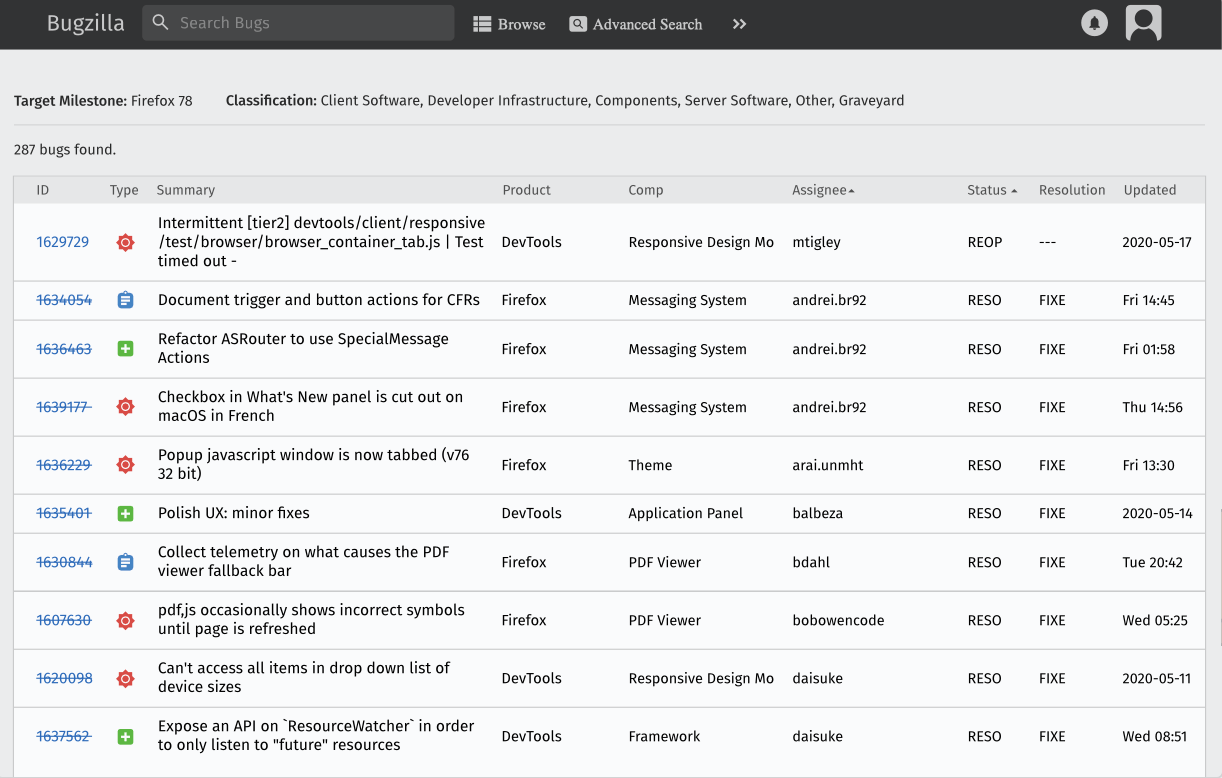
Bugzilla, from Mozilla, is an open-source bug tracking tool with some agile project management features, making it a possible Jira alternative.
Unlike Jira’s broad project management focus, Bugzilla sticks mainly to bug tracking with advanced search, customizable fields, and email alerts.
I found its detailed bug reporting useful—steps to reproduce, environment details, screenshots—but the interface feels outdated and less intuitive compared to modern tools.
Prioritizing and categorizing bugs by severity works well, and tracking progress is straightforward.
If I led a software team, I’d consider Bugzilla to avoid unresolved bugs, but its narrow focus and clunky UI may slow broader project management efforts.
Here’s what a Redditor has to say about Bugzilla and its bug reports:
One thing I would say it does well, is the way it indexes existing bug reports, to allow for fast/relevant searching. Just today I was about to file a bug report and even though my search term was not exactly what the existing bug report turned out to be, I was still able to find an exact duplicate.
The tool is free of cost.
Also read: Bug-tracking tools you can use instead of Bugzilla

Hygger is an agile project management tool with Kanban boards and Gantt charts, positioned as a simpler Jira alternative.
Unlike Jira’s heavy customization, Hygger offers essential features without much complexity—but sometimes feels too basic for complex workflows.
In high-pressure launches, I used Hygger’s Eisenhower Box to prioritize tasks, which helped separate urgent from less important work. While it added some clarity, it’s still a manual process that doesn’t fully eliminate stress.
Hygger supports sprint planning with story points, burndown charts, and velocity metrics, but these features lack the depth I’ve seen in more mature tools.
Integrations with Slack and Google Drive make communication easier, yet overall, Hygger feels better suited for smaller projects or teams not needing advanced capabilities.
We are a small team of software developers and product owners. Bigger products like JIRA are too complicated and not always suitable for our needs. After we switched to Hygger – everything became simple. Hygger is a simple product for simple workflow. Intuitive and effective.
Also read: How Hygger compares with ClickUp
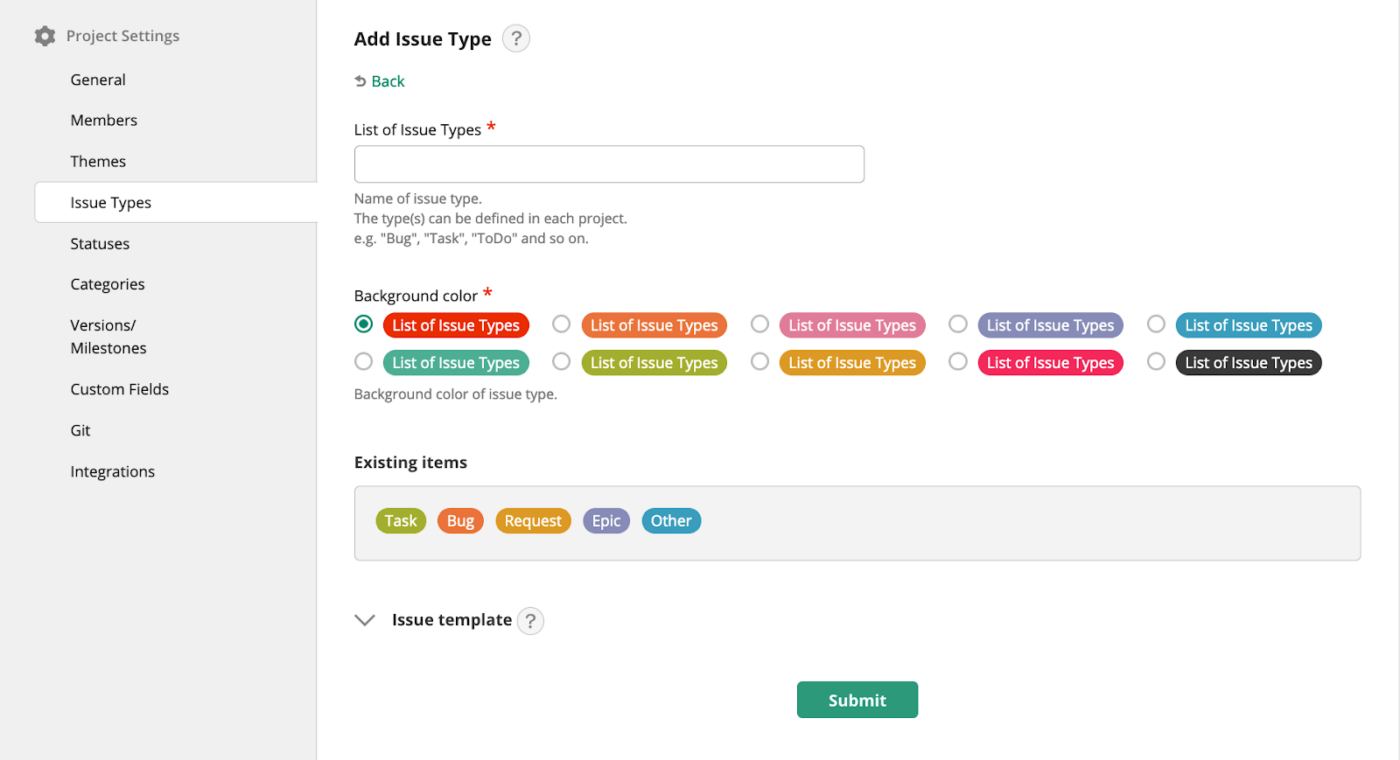
Backlog is an all-in-one project management tool that combines bug tracking, task management, and version control. While it aims to replace Jira, I found it better suited for teams that don’t need overly complex setups.
Its built-in Git and Subversion repositories made it easy to track code changes next to tasks. I liked being able to reference tasks in commit messages, which reduced the need for constant check-ins. Logging issues via email also made things faster—but at scale, the system can get a bit messy without tight conventions.
We used customizable templates for issue creation, which helped avoid writing up lengthy SOPs. Backlog’s access control was solid, especially for teams managing sensitive IP.
It also has something Jira doesn’t: a built-in wiki with Markdown support. Handy for lightweight documentation, but it still felt limited compared to more robust knowledge management tools.
Overall, Backlog offers decent transparency for software teams, but it’s not the strongest choice if your projects demand deep customization or complex workflows.
The product is clutter-free and any features that are added have simple use cases and helps in easier implementation. A good user interface to avoid daily hassles involved in bug/defect reporting daily as a tester.
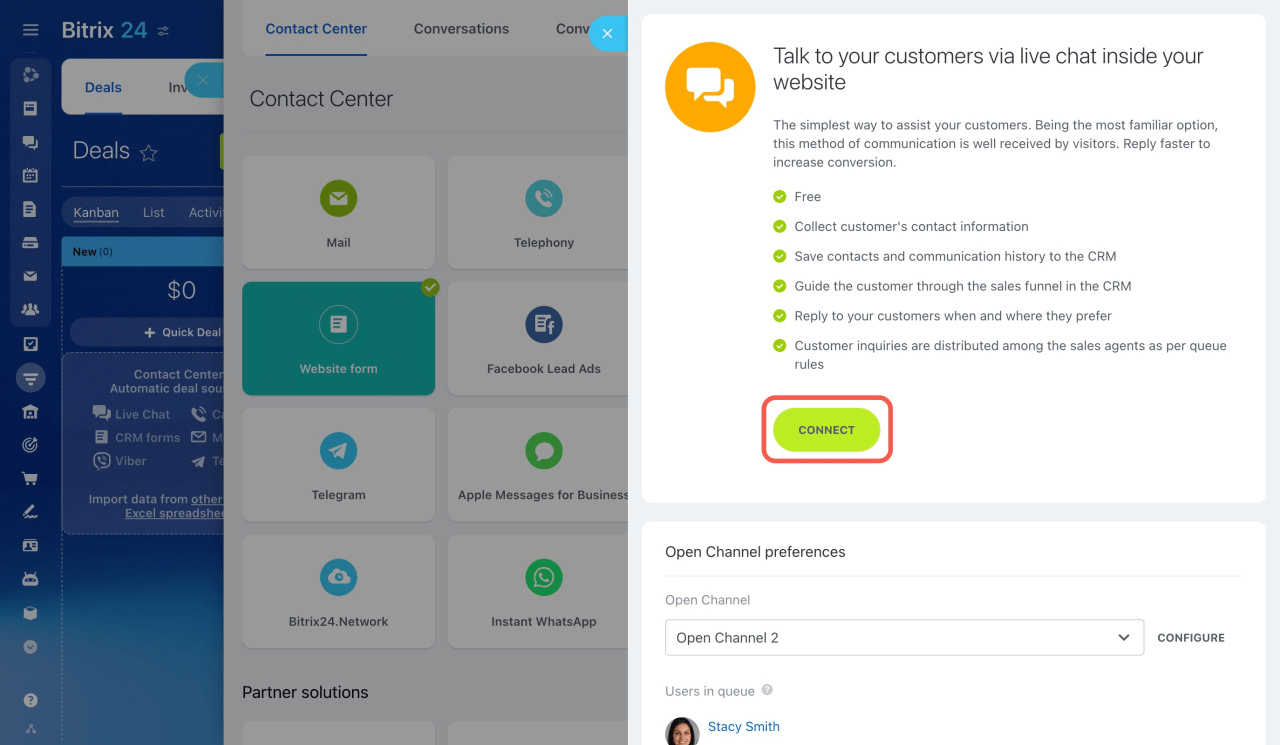
Bitrix24 isn’t just a project management tool—it’s an all-in-one platform with CRM, task management, time tracking, attendance, chat, video calls, and even website building. That’s why it made our list of Jira alternatives.
When I used it across departments, the live chat proved helpful for real-time updates and quick feedback during product development. Tasks could be updated on the fly—but too many features packed into one place meant the UI often felt cluttered and overwhelming.
The social intranet, with profiles, likes, and comments, added a human touch. It helped our team stay informed and boosted morale. But again, for pure project management, it sometimes felt like too much noise around the actual work.
Bitrix24 works well if you want to consolidate tools. But if your priority is structured, focused project execution, it may not be the leanest or most intuitive option out there.
Bitrix24 is a complete business automation tool. We are using it in all of our daily activities. It includes lead management, deal management, task management, project, scrum, sprint, automation and many more things. It is easy to implement it for all the departments.
Each of the Jira alternatives here, in its own way, can effectively manage your projects. However, the key to selecting the right agile project management tool lies in understanding your specific needs, such as:
These are crucial considerations because investing in a project management tool is a significant commitment for your business.
The wrong choice can disrupt your operations and be costly. So, I encourage you to do a thorough research on Jira alternatives. Take advantage of free trials or explore free plans to make an informed decision that aligns with your project needs.
Or, you can skip the search and choose ClickUp. No, seriously.
ClickUp is the world’s first project management app that unifies communication and work management and powers it with AI to unlock unparalleled productivity. It has all the right features to help you standardize and scale project management best practices as you want.
To start experiencing its benefits right away, sign up for ClickUp for free.
© 2025 ClickUp